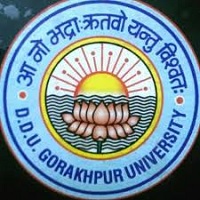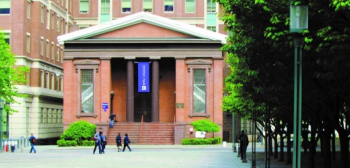- PublicStatus
- HighResearch Output
- 11,746Total Students
- 475Faculty
Status
Whether the University is funded by the government of that country or state, or funded by private donations.
Whether the University is funded by the government of that country or state, or funded by private donations.
Research Output
The research intensity of the University, based on the number of papers output relative to the University’s size.
The research intensity of the University, based on the number of papers output relative to the University’s size.
Total Students
The number of full time equivalent students enrolled at the University.
The number of full time equivalent students enrolled at the University.
Faculty
The number of full time equivalent teaching staff employed by the University.
The number of full time equivalent teaching staff employed by the University.
Deen Dayal Upadhyay Gorakhpur University
About
Read more
Read less
The University of Gorakhpur is a teaching and residential-cum-affiliating University. It is situated at a distance of about 2 kilometers form the downtown to the east and almost walking distance from railway station to the south. Although the idea of residential University at Gorakhpur was first mooted by Dr. C.J. Chako, the then Principal of St. Andrews College, then under Agra University, who initiated post-graduate and undergraduate science teaching in his college, the idea got crystallized and took concrete shape by the untiring efforts of Late Pt. S.N.M. Tripathi. The proposal was accepted in principle by the first Chief Minister of U.P., Late Pt. Govind Ballabh Pant, but it was only in 1956 that the University came into existence by an act passed by the U.P. Legislature. It actually started functioning since September 1, 1957, when the faculties of Arts, Commerce, Law and Education were started. In the following year, 1958, the faculty of science came into being. Faculties of Engineering, Medicine and Agriculture came into existence in later years. Late Mahant Digvijay Nath also made valuable contribution in the formation of the University. The Madan Mohan Malviya Engineering College. At one stage the federal jurisdiction of the University was spread over colleges in Gorakhpur and the adjoining erstwhile twelve districts with about 125 affiliated colleges. In 1973, when the Gorakhpur University Act was replaced by uniform piece of legislation called the U.P. Universities Act, about two dozed colleges located in five districts were transferred to the newly created Avadh University with headquarters at Faizabad. The jurisdiction of the Gorakhpur University was drastically curtailed further in its headquarters at Jaunpur. At present, with the establishment of new colleges and the creation of new districts, there are 123 colleges located in five districts of Gorakhpur Division.
About
The University of Gorakhpur is a teaching and residential-cum-affiliating University. It is situated at a distance of about 2 kilometers form the downtown to the east and almost walking distance from railway station to the south. Although the idea of residential University at Gorakhpur was first mooted by Dr. C.J. Chako, the then Principal of St. Andrews College, then under Agra University, who initiated post-graduate and undergraduate science teaching in his college, the idea got crystallized and took concrete shape by the untiring efforts of Late Pt. S.N.M. Tripathi. The proposal was accepted in principle by the first Chief Minister of U.P., Late Pt. Govind Ballabh Pant, but it was only in 1956 that the University came into existence by an act passed by the U.P. Legislature. It actually started functioning since September 1, 1957, when the faculties of Arts, Commerce, Law and Education were started. In the following year, 1958, the faculty of science came into being. Faculties of Engineering, Medicine and Agriculture came into existence in later years. Late Mahant Digvijay Nath also made valuable contribution in the formation of the University. The Madan Mohan Malviya Engineering College. At one stage the federal jurisdiction of the University was spread over colleges in Gorakhpur and the adjoining erstwhile twelve districts with about 125 affiliated colleges. In 1973, when the Gorakhpur University Act was replaced by uniform piece of legislation called the U.P. Universities Act, about two dozed colleges located in five districts were transferred to the newly created Avadh University with headquarters at Faizabad. The jurisdiction of the Gorakhpur University was drastically curtailed further in its headquarters at Jaunpur. At present, with the establishment of new colleges and the creation of new districts, there are 123 colleges located in five districts of Gorakhpur Division.
University highlights
- 2024#=258
- 2025#=240
- 2026#=330
QS Stars is a rating system that helps you select the right university based on your
interests. It provides a detailed look at an institution, identifying which universities rate highest in
the
specific topics that matter to you, like facilities, graduate employability, social responsibility,
inclusiveness, and more.
Campus locations
Deen Dayal Upadhyay Gorakhpur University, Gorakhpur,
Civil Lines , Gorakhpur , Uttar Pradesh , India , 273009
Similar Universities
Amrita Vishwa Vidyapeetham
Amrita Vishwa Vidyapeetham, Coimbatore
UBC Sauder School of Business
137 – 2053 Main Mall Vancouver, BC V6T 1Z2, Vancouver
New York University Tandon School of Engineering
6 MetroTech Center, Brooklyn
Russian Institute of Theatre Arts (GITIS)
Maly Kislovskiy Lane, 6, Moscow
Russian Institute of Theatre Arts (GITIS)
Maly Kislovskiy Lane, 6, Moscow
EIT Digital
22 Rue d'Arlon, Brussels
Related content

Rethinking international stu…
By
Anna
Zielinska
Updated
1.9k
0
Test preparations
Featured University


Sponsored
438
QS World University Rankings
-
10 UG & 47 PGTotal courses
-
Private for ProfitStatus
-
HighResearch output
Deen Dayal Upadhyay Gorakhpur University
basic
Public
High
25
no
M
EN













